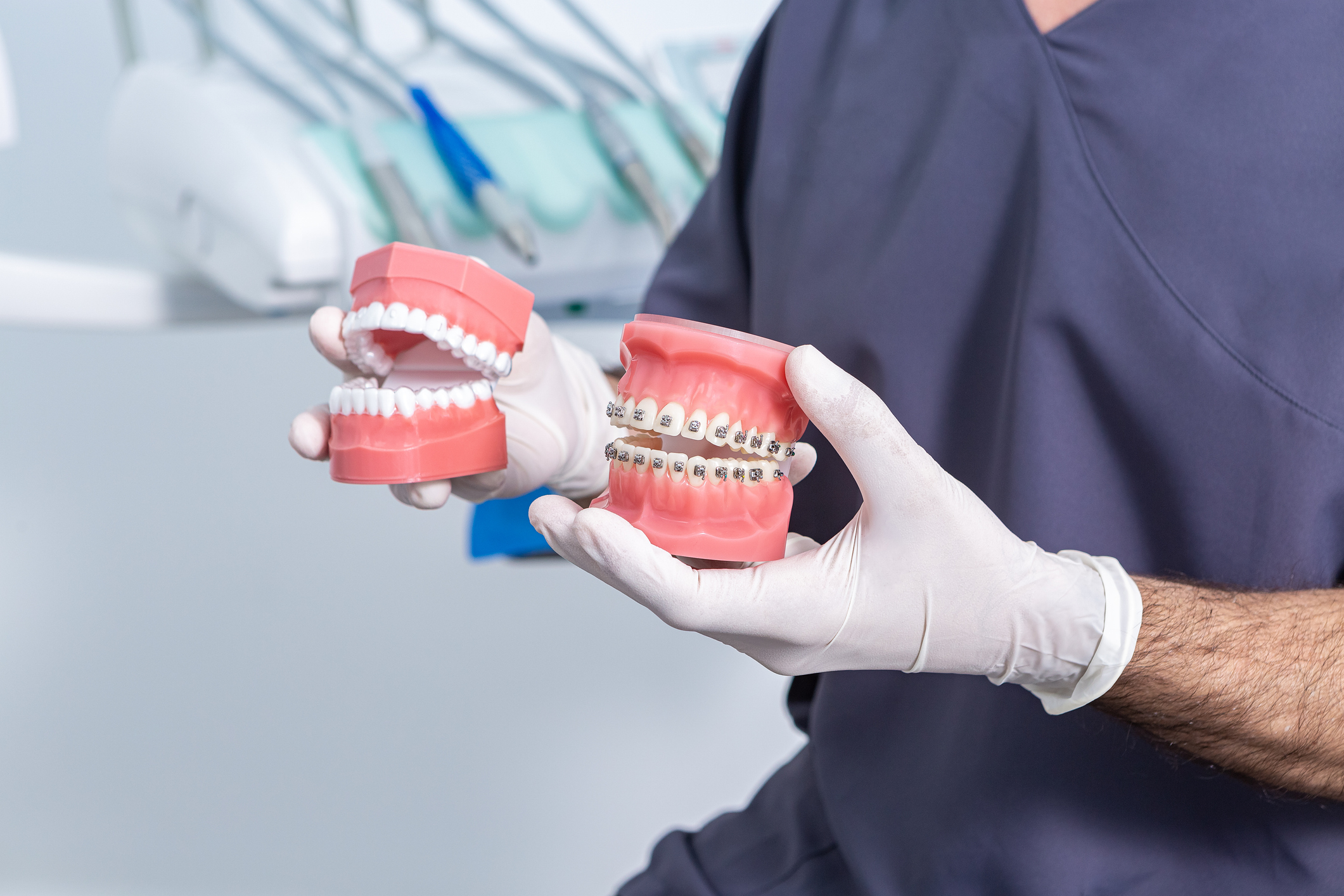If you’re looking into options for orthodontic braces for your child, you might be sorting through the different types of braces available. Knowing the differences and benefits of each type can help you make an informed decision about which option is best for your child’s needs and preferences. While working with an experienced orthodontist at Children’s Dentistry will provide the most personalized and accurate recommendations, here’s a breakdown of the types of braces commonly used for children:
Traditional metal braces
Metal braces are the most common type of braces chosen for children. They consist of metal brackets that are bonded to each tooth and connected by a wire, which is gradually tightened over time to shift the teeth into the desired position. Metal braces are highly effective and can correct a wide range of orthodontic issues.
Your child can also personalize their metal braces with different-colored elastics, making them a fun and customizable option for kids. Plus, they’re often the most affordable type of orthodontic treatment.
Ceramic braces
Ceramic braces are similar to traditional metal braces, but instead of metal brackets, the brackets are made of a clear or tooth-colored ceramic material that blends in with the teeth. This makes them a more discreet option for kids who may feel self-conscious about wearing metal braces.
Ceramic braces are also a popular choice for adults who want to straighten their teeth without the noticeable appearance of metal braces. However, they can be more fragile and require extra care to avoid staining or breaking the brackets. For this reason, they may not be the best option for young children or those with more complex orthodontic needs.
Self-ligating braces
Unlike traditional braces, self-ligating braces do not require elastic or metal ties to hold the wire in place. Instead, the brackets have a sliding mechanism that holds the wire in place and allows for more efficient movement of the teeth. This can result in shorter treatment times and fewer appointments.
Self-ligating braces are available in metal and ceramic options and can even make oral hygiene easier and more comfortable since there are no ties to collect food particles or irritate the mouth.
Lingual braces
Lingual braces are similar to traditional metal braces in that they use metal brackets and wires. However, instead of being placed on the front of the teeth, lingual braces are attached to the back of the teeth, making them virtually invisible. They are also custom-made to fit the shape of each individual’s teeth, making them a highly personalized option for orthodontic treatment.
While lingual braces can be a great braces option for those who want discreet treatment, they may not be suitable for all orthodontic issues and can be more difficult to clean and adjust than traditional braces.
Clear aligners
Clear aligners, such as Invisalign, have become a popular alternative to traditional braces for both adults and children. They are made of clear plastic and fit snugly over the teeth, gradually shifting them into place with each new set of aligners. One of the main benefits of clear aligners is that they can be removed for eating and cleaning, making them a more convenient option for some children.
However, clear aligners require a high level of compliance and discipline to wear for the recommended 20-22 hours per day and to change out the aligners as instructed.
We’re offering a better orthodontic experience
At Children’ s Dentistry, we’re here to help you navigate your child’s orthodontic journey and find the best braces option for their needs. Our orthodontists specialize in children’s orthodontic care, with a focus on making the experience as comfortable and efficient as possible. We care about long-term outcomes, not just quick fixes, and we’ll work with you to create a personalized treatment plan for your child. Schedule an appointment online today.

